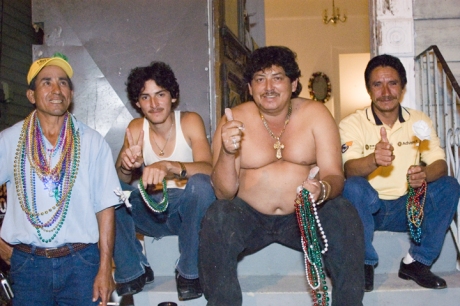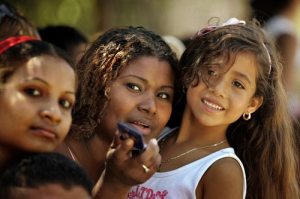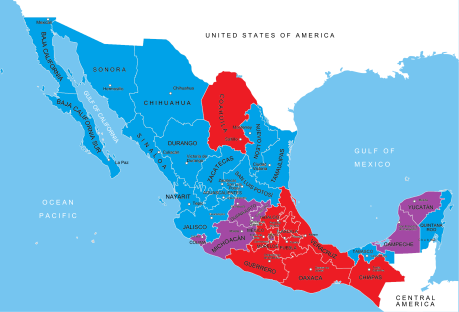The case of al-Andalus and its Andalusi Muslims is a classical example of the clash of civilizations and history being re-written by the winners. Al-Andalus was the name given to the Iberian peninsula (modern Spain & Portugal) by the Arabs who conquered it beginning in 711 AD and who would control parts of it until 1492.
In standard history textbooks, we are taught that the Muslims of al-Andalus were “Moors”, a term that has been ambiguously by Europeans used to refer either to Arabs, Berbers, or black Muslims, or to Muslims in general. These textbooks will tell you that the Moors conquered Spain and ruled it for 800 years, during which the Christians of the unconquered far north of the peninsula were launching a war of reconquest (la reconquista) to “take back” their country from the invading Moors which culminated in the 1492 conquest of Granada, the last Muslim state and city of Iberia. This history is thus presented as a typical case of a colonial power taking over a country and then the local population rising up and throwing their colonizers out. However, this is wrong. Why? Because this was not any typical conquest or even colonization. In fact, none of the Arab conquests were typical. They were in a sense, innovative. Today (most of) the people in the formerely conquered regions, from Iraq and Syria, to Egypt and Morocco, speak in Arabic, practice Islam, and proclaim themselves Arabs. You won’t be finding any Persians or Russians calling themselves Mongols, nor any Jamaicans or Indians saying they are British. Even in the formerly conquered areas where the people don’t speak Arabic or call themselves Arabs (Iran, Turkestan, and Pakistan), the people are staunchly Muslim. In Spain/Iberia, it was no different to the rest of the Muslim Arab conquests, except that the peninsula was reconquered by the former religious group, who re-Christianized and re-Romanized the region.
To be blunt, the Muslims of Iberia were, for the most part, not Arabs, Berbers, nor blacks. They were muwalladun (or muladi), meaning that they were of indigenous Iberian ancestry. They were Iberian Christians converted to Islam, who later exchanged their Romance language for Arabic, and their “Roman” (the Iberians, like the French and Romanians are Romans in culture, not ancestry) identity for an Arab one. This was similar to how most of the ancient Coptic-speaking Egyptian Christians and Aramaic-speaking Syrian Christians slowly became today’s Arabic-speaking Egyptian and Syrian Muslims.
Yes, the initial Muslims of Iberia were of course Arabs and Berbers, just like the first Muslims in Egypt and Syria were Bedouins from Arabia, but after about the year 950, most Andalusi Muslims were native converts from Christianity who over the centuries adopted the Arabic language. In the beginning, we know from archaeological and historical evidence that different ethnicities were recognized among the Muslims in Iberia. Divisions in identity, like Arab, Berber, Muladi, Zanji (black), and Saqaliba (Slav) were clear in Andalusi minds. However, after about the year 1000, when al-Andalus began to fracture into separate taifa (local) kingdoms, the ethnic differences began to be blurred out and all Muslims came to identify as Arabs, given that they spoke in Arabic (a unique dialect at that). This was also facilitated by the fact that the overwhelming majority of Muslims by this time were Muladi, who composed around 80% of the Andalusi population by 1100. Richard Bulliet, in his book “Conversion to Islam in the Medieval Period” demonstrates a “conversion curve”, which depicts a society’s conversion to Islam (under Arab rule) as a logistic curve, where few convert in the beginning, but after about 200-300 years of Arab rule, the majority begin adopting Islam, and afterwards, less and less people convert, leaving a “conversion-resistant” group as the minority who still holds on to pre-Islamic traditions, language, and religion (typically accounting for 15-20% of the Islamized population). While this curve is not so great for tribal societies, like in the Maghreb where the people who still hold on to the Berber identity yet practice Islam, this is great for describing Syria, Iraq, Egypt, and Spain (and to a certain extent, Iran). We see in Bulliet’s work, that the majority of Iberians should have converted between 900-1000 AD. And indeed, we see that it was precisely during this time that the mosques were enlarged, the Christian clergy warned of “Latins” (Christians) becoming “Chaldeans” (Muslims), and the tax revenues were thinned (new Muslims no longer had to pay the jizya tax). In fact, the 10th century ‘Abd ar-Rahman III, considered one of the greatest ruler of al-Andalus, was pale, blue-eyed, and died his hair black according to contemporary accounts of him.
However, after ‘Abd ar-Rahman III proclaimed himself Caliph of all Islam, his successors battled for the inheritance and Muslim Iberia fractured into separate petty taifa states, which were one by one conquered by the now powerful Christian kingdoms of the north. The process of Arabization and Islamization was reversed as most of the Christian kings (particularly the Kingdom of Castile) who conquered these taifas ordered Muslims to convert to Christianity and abandon their Arabic speech in favor of a “Christian” language (Romance). Perhaps the only real Berber and black rulers in Spain, the Almohads and Almoravids, respectively, conquered al-Andalus and were responsible for importing attempting to forcibly convert the remaining non-Muslim population. However, after the Almoravids, the remaining taifa kingdoms were conquered by Castile and Portugal, except for the Emirate of Granada in the far south, where thousands of Muslims and even Jews fled in order to escape persecution. Now all the Christian kingdoms (Galicia, Asturias, Leon, Castile, Aragon, Navarre, and Catalonia) except Portugal were coalescing into a single country, Spain (finalized in 1469). By this time, the Muslims firmly called themselves “Arabs” even though they were mostly Iberians.
It is worth noting that whenever a group of people fight together against a common enemy who calls them out for a particular trait (religion, ethnicity, culture), that group gains a collective identity and becomes cohesive as a society. Therefore we see how in fighting the Christians, the Andalusi Muslims gained a common identity, whereas before, they recognized that they were mostly non-Arab converts, with a minority of Arabs, Berbers, etc.
Anyhow, after the conquest of Granada, the Muslim population was given the choice of conversion, exile, or death. About half chose exile and about half chose conversion. However, it is obvious that forcing a person to convert won’t make him/her honestly adopt the new religion. And so the now-Christian Andalusies continued to practice Islam in secret. That’s where the Inquisition came in in order to root out “heretics”. These new Christians were called Moriscos or “little Moors” However, even after 100 years, the Spanish & Portuguese governments weren’t happy and expelled the Moriscos in 1609 and 1614. To add insult to injury, the history of al-Andalus and the identity of the Andalusi Muslims was altered by the victorious Christians who labelled the Muslims as foreign invaders who were rightfully being dispossessed by the “true” owners of the land. Forget Muladies, history (as dictated by “traditional” Spanish/Portuguese history) would remember these Muslims as Moors, foreign invaders of Arabic or (North) African origin who merely “occupied” Iberia as oppressive Islamic overlords. Unfortunately, this is the view that has prevailed among most people today. Yet, an increasing amount of scholars (even Spanish & Portuguese ones) are recognizing that the so-called Moors of Spain were in fact Muslim Spaniards.
As for those (mostly Afrocentrists) still presenting the Muslims in Spain as blacks and showing off paintings of black Muslim “Moors”, it suffices to say that practically all of those paintings were made by non-Iberian Europeans in the 19th to 20th centuries, over two hundred years after the last of the Moriscos was expelled from Iberia. You also have Shakespeare’s Othello, a black Muslim “Moor”, but this play is from the 17th century and of course, we know Shakespeare was English and never traveled to Iberia. There are a few medieval paintings showing black Muslims in Spain, including the famous one about blacks playing chess, but these are only a handful of pictures compared to hundreds of other medieval Christian and Muslim paintings depicting the Muslims of Spain as light skinned and even light haired.

The famous picture that Afrocentrists love using to “prove” that the Muslim Andalusies were black. In fact, one of the only pictures of blacks in medieval Spain. It is from “The Book of Games”, a Castillian translation from Arabic that was commissioned by King Alfonso X.

The complement to the above picture. Also from The Book of Games. This type of Muslim is overwhelmingly more common in the book than the couple of medieval black Muslim illustrations. Also, notice a Muslim ginger!

The only other picture of a black Muslim in Spain that I have yet seen (excepting one of the following pictures that depicts 1 black Muslim among 5 non-black Muslims).

A Christian and a Muslim playing chess in Spain, note the light features of the Muslim. Apparently the Christians did not find the Muslims to be darker than themselves.

Christian and Muslim playing chess. From The Book of Games. King Alfonso X ordered illustrations to be added to the book, so these pictures are what the Christian of Iberia saw the Muslims as.

“The Moorish Chief”. A favorite by Afrocentrists. Note, this painting is not from the time period of al-Andalus (711-1492). This is from 1878 (by Eduard Charlemont).
The following are Moor pictures, of Moors! Notice how many of these “Moors” even have blonde hair, and notice the last picture contains one black Muslim, one brown Muslim, and four white Muslims (including a blonde).




To finalize this and drive the point home, let’s find out about the descendants of the Moriscos and Spanish “Moors”. Hundreds of thousands of Andalusi Muslims fled Iberia throughout the reconquista, especially during the fall of Seville, Cordoba, and Granada, and after the 1609-1614 expulsions of the Moriscos. The grand majority migrated to North Africa, especially Morocco and Tunisia, where their descendants live to the present day. the interesting and exciting fact is that these people have preserved their identity and many have not intermarried with the local population, thereby leaving us with direct evidence of who their ancestors were. They claim descent from Muslim Andalusi refugees and expelled Moriscos. Their cities and towns have a medieval Spanish/Andalusi layout, their architecture is noticeably Spanish/Andalusi/Mudejar, their last names are Arabized versions of Spanish (& Portuguese) names and cities, and their appearance is noticeably European. Anthropologist William Ripley stated in his book The Races of Europe, that, “Allied to the Arabs are the Moors, or town-dwelling Arabs. They are fairer in complexion than the country Arabs, which may be partly explain by the fact that many are descendants of the Moriscos expelled from Spain, who had absorbed Spanish blood” (405). This means that the “Moors” were lighter-skinned than the brown-skinned Arabs, NOT any black-skinned people. After Ripley, anthropologist Carleton Coon in his own The Races of Europe book, states that “The racial character of the richer, city-dwelling Moors of Andalusia, before the time of their expulsion, may be suggested by a study of the almost wholly unmixed descendants of these emigres in Morocco… In facial morphology, they are fully Andalusian. The implication is that the Moors in Spain took more from the population of the peninsula, in a racial sense, than they gave” (494-495).

Niama Moumen, a descendant of Andalusi Muslims in Morocco, note her features and tell me if they come from sub-Saharan or North Africa?
Moor pictures again! This time descendants of Andalusi Muslims in Morocco and Tunisia. I got most of these pictures from Facebook. How? It’s easy, most of the descendants of Moriscos are known to have Arabized Spanish (& Portuguese) surnames. So for example, the surname “Chtiba”, which comes from the Spanish city of “Xativa”. In fact, many of these names come from the names of Spanish cities. Others include Zbiss (Llopis), Chbili (Seville), Gharbi (Algarve or “Westerner”), Gharnati (Granada). The following are people from Morocco and Tunisia who bear these Arabized Spanish last names. No suprise, many of them come from the Tangier-Tetouan region of Morocco and the Beja governate in Tunisia, where most of the descendants of the Andalusies are known to live.
Modern documentaries produced by Spaniards themselves show the descendants of the Andalusi Muslims. The following video is a testament to the true origin of the “Moors” of Iberia. It is actually fascinating to watch these videos, even for those who might not understand Spanish.
As suspected, most of these people identify as Arabs, even though most of them are clearly white. I guess these guys (along with the unknown descendants of the Sicilian “Arabs”) are the white complement to the black “Arabs” of the Sudan and the Sahara, and even some of the yellow “Arabs” of Central Asia (even though most Central Asian Arabs are not of Mongoloid origin). Today, there are an estimated 5 million descendants of the Andalusies in Morocco alone. With Moroccan immigration to Spain, most Muslims in Iberia are now truly “Moors” – North Africans, though at least some of the immigrants are probably descendants of Andalusies, so some of these guys have returned to the land of their ancestors perhaps without even knowing it!
There you go folks, that is the “Moors” for you.




















